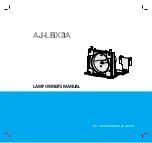
OPTIMOD-AM DIGITAL
INTRODUCTION
1-11
input and output accommodate sample rates of 32 kHz, 44.1 kHz, 48 kHz, 88.2 kHz,
and 96 kHz.
Analog Microwave STLs
Potential problems include overloads induced by preemphasis and requirements
that the audio applied to the microwave transmitter be processed to prevent over-
modulation of the microwave system.
Lack of transparency in the path will cause overshoot. Unless carefully designed, an-
alog microwave STLs can introduce non-constant group delay in the audio spectrum,
distorting peak levels when used to pass processed audio. Nevertheless, in a system
using a microwave STL, the 9300 is sometimes located at the studio and any over-
shoots induced by the link are tolerated or removed by the transmitter’s protection
limiter (if any).
The 9300 can only be located at the transmitter if the signal-to-noise ratio of the STL
is good enough to pass unprocessed audio. The signal-to-noise ratio of the STL can
be used optimally if an Orban Optimod-PC 1101, Optimod 6300, 8200ST Compressor
/ Limiter / HF Limiter / Clipper or an 4000 Transmission Limiter protects the link from
overload. Of these, the 1101 and 6300 are currently manufactured as of this writing
and are the preferred choices because their AGCs are identical to the AGC in the
8500.
If the 9300 is located at the transmitter and fed unprocessed audio from a micro-
wave STL, it may be useful to use a companding-type noise reduction system (like
dbx Type 2 or Dolby SR) around the link. This will minimize any audible noise
buildup caused by compression within the 9300.
Some microwave links can be modified such that the deviation from linear phase is
less than +10
from 20 Hz to 9.5 kHz and frequency response is less than 3 dB down
at 0.15Hz and less than 0.1 dB down at 20 kHz. This specification results in less than
1% overshoot with processed audio. Many such links have been designed to be eas-
ily configured at the factory for composite operation, where an entire FM stereo
baseband is passed. The requirements for maintaining stereo separation in compos-
ite operation are similar to the requirements for high waveform fidelity with low
overshoot. Therefore, most links have the potential for excellent waveform fidelity
if they are configured for composite operation.
Nevertheless, in an analog microwave system, the 9300 is usually located at the main
AM transmitter and is driven by the microwave receiver. One of Orban’s studio level
control systems (like our 6300) protects the microwave transmitter at the studio
from overload. This unit also performs the gain riding function ordinarily executed
by the AGC section of the 9300’s processing and it optimizes the signal-to-noise ratio
obtainable from the dual-microwave link.
If the STL microwave uses preemphasis, its input preemphasis filter will probably in-
troduce overshoots that will increase peak modulation without increasing average
modulation. If the studio level control system is capable of producing a pre-
emphasized output, we strongly recommend that the microwave STL’s preemphasis
be defeated and preemphasis performed in the studio level control system. This
Summary of Contents for OPTIMOD-AM 9300
Page 1: ...Operating Manual OPTIMOD AM 9300 Digital Audio Processor Version 2 0 Software...
Page 7: ...Operating Manual OPTIMOD AM 9300 Digital Audio Processor Version 2 0 Software...
Page 178: ...3 46 OPERATION ORBAN MODEL 9300...
Page 200: ......
Page 221: ...OPTIMOD AM DIGITAL TECHNICAL DATA 6 21...
Page 222: ...6 22 TECHNICAL DATA ORBAN MODEL 9300 CONTROL BOARD PARTS LOCATOR...
Page 228: ...6 28 TECHNICAL DATA ORBAN MODEL 9300...
Page 229: ...OPTIMOD AM DIGITAL TECHNICAL DATA 6 29 I O DSP BOARD LEFT AND RIGHT ANALOG INPUTS...
Page 230: ...6 30 TECHNICAL DATA ORBAN MODEL 9300 I O DSP BOARD ANALOG OUTPUTS...
Page 231: ...OPTIMOD AM DIGITAL TECHNICAL DATA 6 31...
Page 238: ...6 38 TECHNICAL DATA ORBAN MODEL 9300 FRONT VIEW REAR VIEW FRONT PANEL PARTS LOCATOR DIAGRAM...
















































